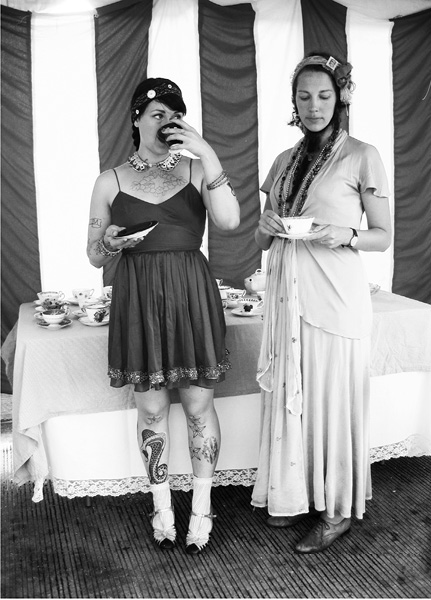
GIRL SHOW
first performed on July 20-22, 2012
Artscape, Baltimore, MD
performed once in 2012
CAITLIN RUETER & SUZANNE STROEBE
New York, NY
475975913a475975913f475975913e475975913m475975913i475975913n475975913i475975913s475975913t475975913t475975913e475975913a475975913p475975913a475975913r475975913t475975913y475975913@475975913g475975913m475975913a475975913i475975913l475975913.475975913c475975913o475975913m
afeministteaparty.wordpress.com
GIRL SHOW
CAITLIN RUETER & SUZANNE STROEBE
“Girl Show” uses the theme of Depression and World War II-era roadside attractions to engage guests in conversations surrounding feminisms. Considering the role of nostalgia in learned histories, we engage with viewers and ask viewers to engage with us, freely and with a sense of humor.
Roadside attractions were at their peak in the United States during the 1930s and 1940s. Although this period is often overlooked in feminist history (perhaps because it is bookended by the first and second wave of feminisms) it seems particularly relevant today. For many Americans, this was a time of hardship as the United States and much of the world was reeling from an economic collapse. This was also a time of tremendous political upheaval. Earlier movements, which had earned women new political and social freedoms, also pushed more women, not only poor ones, into the labor market and, eventually, into the public sphere. Then, as in 2012, economic crisis, the resurgence of alternative political ideologies, the re-gendering of labor market competition, and revolutions in popular media forced many to reconsider their place in the world.
“Girl Show” invites guests to join “the Tattooed Lady” and “the Bearded Lady” in their tent—a nod to the carnival—to share a cup of iced tea and a slice of watermelon, play a game of feminist trivia, “Who Is It?,” and participate in the ensuing conversation about historical and contemporary feminism. Winners receive artwork as a prize.
Historical roadside attractions used oddities or free gifts to lure travelers and passersby in order to sell them trinkets and goods. In “Girl Show,” we entice guests to share their thoughts and ideas with us and with each other, and to foster new ones, whether we hold their attention for a few minutes or all day.